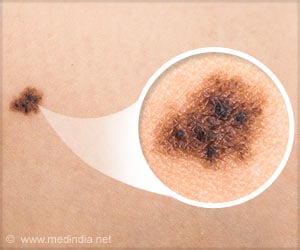Researchers from CRC CARE are pioneering a world-first technology(biosensors) to detect toxic metal in water and air to warn the local people if the air and water around them is safe for consumption.
Researchers from CRC CARE are pioneering a world-first technology(biosensors) to detect toxic metal in water and air to warn the local people if the air and water around them is safe for consumption. Many a times the water has dangerous levels of toxic heavy metals and metal-like substances like arsenic, cadmium and lead which are industrial and natural contaminants around the world. Andrew McKay, a PhD student at CRC CARE and The University of Queensland, is researching the transformations that take place in a unique water microbe when it is exposed to such toxic materials.
“Our goal is to develop a simple field test that can warn people or environmental authorities if dangerous levels of toxic metals or metalloids (metal-like substances such as arsenic) are present in the environment, to which they might be exposed,” he explains.The test could provide vital in helping to tackle one of the world’s greatest disasters – the poisoning of tens of millions of people in Bangladesh and West Bengal, India, through naturally–occurring arsenic in their household well water.
“But countries such as Australia and New Zealand also have an arsenic problem from the tens of thousands of old sheep and cattle dips where arsenic was used for decades to control pests," Mr McKay said.
"In many cases these old dip sites have been forgotten and spreading urbanization has covered them.
“We also have numerous old gold mining sites where arsenic was once used, tailings dumps from almost any kind of metal mine and wetlands that were used to trap contaminated runoff.”
Mr McKay said old factories which produced paint or batteries had left historical residues of lead in our inner city areas, while fertilizer plants and other industrial processes had deposited cadmium and other toxic metals.
“As city land value increase due to demand, we need better ways to make sure the land is clean and safe to live and work on.”
“We’ve found a number of readily-observable changes which take place in the organism when it is exposed to increased levels of toxic metals and metalloids," he said.
"Their growth and reproduction rates slow down and their shape changes – becoming star or V-shaped."
“And of course, at high levels of the toxins, they die.”
These changes will enable scientists to use the pond creatures as living sensors – or biosensors – for toxic metal contamination. The current research challenge, he says, is to use the organisms to develop a sensitive enough test to discern whether or not the level of contamination poses a risk to human health and life.
Simple pond creatures are often more tolerant of metals than humans, who accumulate the toxins over a much longer period of time, leading to cancers, immune system breakdown, nerve or brain damage or other forms of poisoning.
The research task now is to equate the symptoms observed in the microbes with levels of risk to humans and animals, and to package this as a cheap, simple test that can provide a quick answer in the field – rather than through long and expensive laboratory testing, Mr McKay said.
Source-Eurekalert
BIN/C
 MEDINDIA
MEDINDIA
 Email
Email




